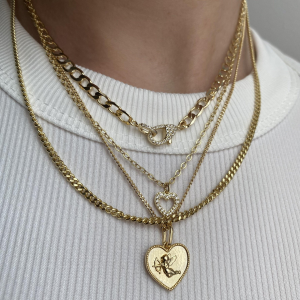How Does Omega Know Who Has Won Gold?
How Does Omega Know Who Has Won Gold?
 Sporting events are all about superlatives: who’s the fastest runner, the stronger opponent, the highest jumper?
Sporting events are all about superlatives: who’s the fastest runner, the stronger opponent, the highest jumper?
Watchmaker Omega is an Official Timekeeper who subscribes wholeheartedly to the philosophy of excellence in all things. For 80 years the company has supported athletes in their endeavours to take the human experience that little bit further and has matched this with ground-breaking technological innovations in timekeeping systems.
Record breaking performances often hinge on a fraction of a second. Who finished first in this race? Omega’s Scan ‘O’ Vision photo finish cameras are there to record details down to the tenth of a second time frames, ensuring that the athletes’ every move will be recorded accurately and timely, when they reach the finish.
In recognition of the extraordinary progress athletes have made over the years, the watchmakers have launched the beautiful Omega Speedmaster Date range of 14 time pieces with self-winding chronograph, chronometer movement with rhodium-plated finish and a power reserve of 44 hours.
The Omega 1164 comes in a variety of styles: steel on steel, black leather strap and red gold casing, brown leather strap and yellow gold casing, or steel bracelet with red gold plus steel casing for example. Dials can be blue, black or white and all watches come with 100 meter (330 feet) water resistance and are made of scratch-resistant and anti-reflective sapphire crystal.
In order to know, who has actually won a sporting competition like a race for example, each athlete must be assessed with regard to their reaction time before the race has even begun. This measuring procedure happens just prior to the start of a race, when the athletes insert their feet into the starting blocks.
The blocks are fitted with a pressure sensitive device and are interconnected. Timekeeping technology records the sprinters’ actions and reactions in real time and down to the smallest detail. Thus the starter will be able to tell from the information received, who is responsible for a false start and who should be recalled.
Since the rules of the International Amateur Athletic Federation state that the minimum time for a physiological reaction stands at 100 milliseconds, any athlete’s reaction time measured below this level is deemed to be premature and would lead to a false start.
The reaction time of an athlete will be influenced by how well he or she has trained for the event, their level of concentration at the time of the start and may also be influenced by their individual character and temperament.
This reaction time at the start of a race is taken into account, when calculating the overall time it has taken an athlete to reach the finish line from the starting position. As the results can sometimes hinge on tiny differences recorded at the very start of the race, the winner is sometimes not the athlete who crosses the finishing line first.
This has happened a few times in Sporting history, like in 1976 for example, when the 110-metre hurdles race in Montreal was seemingly won by Alejandro Cana?�as of Cuba, who had run faster than his opponents in the final, but the actual winner turned out to be Guy Drut of France, because his faster reaction time at the beginning of the race had beaten his Cuban opponent by the fraction of a second.








